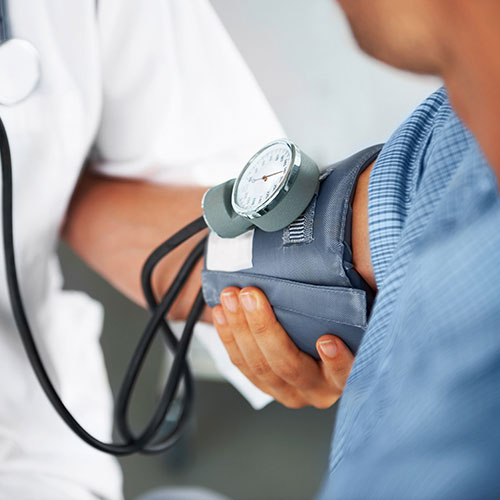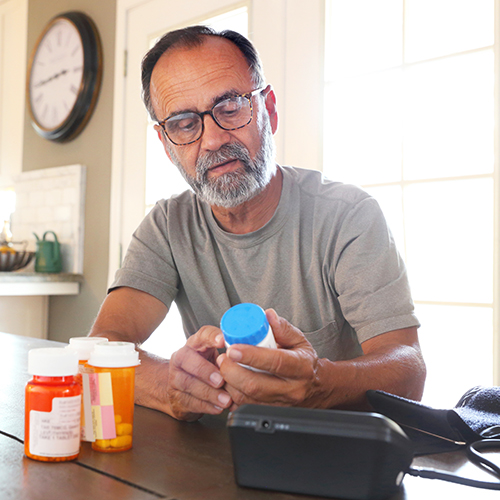February 2021
Strokes can be dangerous and even deadly. As the fifth-leading cause of death for Americans, they are common. Even survivors can experience profound changes to their quality of life. Remembering this odd phrase can save your life and your quality of life if you ever experience symptoms of a stroke: “Time is brain.”
In a nutshell, “time is brain” means that the longer it takes to treat a stroke, the more likely you are to incur significant brain damage, suffer a long-lasting disability or die. Stroke is the leading cause of serious long-term disability in the U.S., according to the Centers for Disease Control and Prevention (CDC).
What Is a Stroke?
A stroke is a cerebrovascular disease. It happens when blood flow to the brain is blocked. When that happens, the brain can’t get the oxygen it needs. Within minutes of oxygen deprivation, brain cells start to die.
The odds aren’t good. One in four people worldwide will have a stroke, according to the American Stroke Association. In the U.S., every 40 seconds someone has a stroke, and every four minutes someone dies from a stroke, according to the CDC.
Learn the Types of Stroke
Strokes are also known as brain attacks. There are three main types:
- Ischemic strokes. This is when blood clots, other particles or fatty deposits called plaque cause blockages in the blood vessels to the brain. Some 87% of all strokes are ischemic.
- Hemorrhagic strokes. These strokes occur when a blood vessel leaks or bursts in the brain. Blood builds up, damaging surrounding brain tissue.
- Transient ischemic attacks (TIAs). Also called “mini strokes,” TIAs occur when blood flow to the brain is blocked only briefly, usually for five minutes or less.
Know the Warning Signs
A stroke can go undetected if you don’t know the warning signs. Getting yourself or someone you know the help they need and quickly can make a difference in the person’s health outcome.
Strokes can happen at any age. Your risk of a stroke more than doubles each decade after age 55, according to the National Institutes of Health’s Know Stroke campaign.
It’s critical to recognize and diagnose a stroke within three hours of the first symptoms. The most effective stroke treatments are given within this timeframe, according to the CDC. After that, options may be limited.
Be F.A.S.T.
The acronym F.A.S.T. offers an easy way to spot a stroke in progress.
- Facial drooping. Ask the person to smile. Is one side of their face drooping or numb? An uneven or lopsided smile is a sign.
- Arm weakness. Ask the person to raise both arms. Is one arm weak or numb? Notice if one arm drifts downward.
- Speech difficulty. Ask the person to repeat a simple sentence. Are they slurring their speech or hard to understand? They may sound strange, like they’re drunk, or not be able to speak at all.
- Time to call 9-1-1. If you notice any of these symptoms, even if they go away, call 9-1-1 and get emergency care.
Five Sudden Signs of Stroke
Many warning signs can come on suddenly. Review these five additional stroke symptoms from the ASA.
- Sudden numbness or weakness in the face, arm or leg, especially on one side of the body.
- Sudden confusion, including trouble speaking or difficulty understanding speech.
- Sudden trouble seeing out of one or both eyes.
- Sudden trouble walking, including dizziness, loss of balance or lack of coordination.
- Sudden severe headache with no known cause.
Additional stroke signs in women
Men and women experience many of the same stroke symptoms. But women experiencing stroke may have these other subtle symptoms that are often overlooked, according to the American Heart Association.
- General weakness throughout the body.
- Disorientation, memory problems or fatigue.
- Nausea or vomiting.
Get Help Immediately
If you or someone you know is experiencing stroke symptoms, call 9-1-1 immediately. Remember, time lost is brain lost. And be sure to take note of when the first symptoms started.
Some municipalities have special ambulances known as mobile stroke units that can begin life-saving treatment faster. They carry special imaging machines that help doctors determine the type of stroke so they can begin the right treatment earlier. Your 9-1-1 operator may dispatch such an ambulance if it’s available.
Now that you know, help spread the word. Post the symptoms near a phone or on your refrigerator. Share this list with family and friends. It could save someone’s life.



